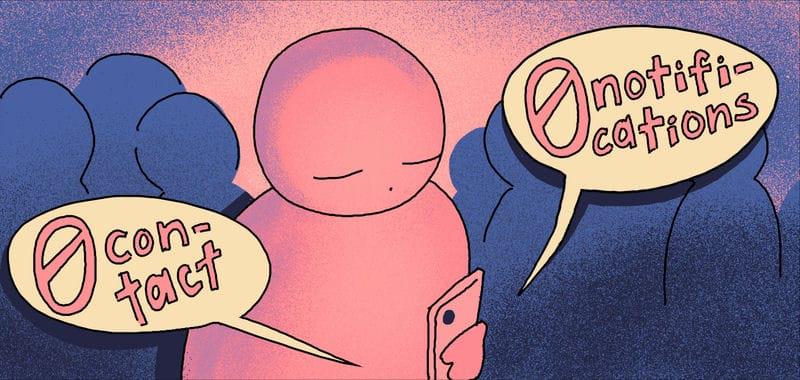
Disjointed Creative Communal Isolation: The Plight of the Quarantined Creative Community
Denise Zubizarreta, Creative Team Member
January 25, 2022
Art in isolation isn’t a new concept, many artists feel as though the isolation opens the creative mind allowing for a comprehensive connection to their work that supersedes the need for community. Edvard Munch faced a similar quarantined way of life (as we are now) in childhood. With his mother and sister dying of tuberculosis; this involuntary isolation fueled his creativity, utilizing his emotional experience (to work through his hands) in order to enhance his creative expression. Though isolation plays a significant role in the creative process, there is a much larger force that breeds ideas and motivates them into fruition.
In their research on “Deconstructing the Lone Genius Myth”, researchers Alfonso Montuori and Ronald E. Purser write:
“Creative expression always occurs within a cultural and historical milieu. Any discussion of creativity inevitably needs to be situated within a historical, but also sociopolitical, context. It is therefore not possible to speak of a “generic” or “universal” creativity: What is considered creative today in the United States may not have been considered creative in the same geographical area 500 years ago, and may also not be creative in China today. It is therefore important to develop an understanding of the “genealogy” of creativity and the contextual influences that led us to consider works to be creative in our present period."
They pose the most current question and concern, how has creativity in today’s market changed the way creatives develop their crafts? With the meaning of “community” feeling loose in today’s world, social media sites like Facebook and Instagram have fostered a disjoined communal creative isolation that has become the norm. Breeding the isolation so many are perplexed by today. Gone are the days of Munch, isolated truly, with few tasks to choose from in order to fight the burdening boredom. The world may see a shift in their communities but artists have been flourishing behind these scenes, as technology has connected even the most agoraphobic of creative minds. Those who seek the connection of the outside world are finding themselves consumed by the complexities of their most inner circle, home. Breading a need for creative expression but void of the universe’s tangible vastness, only to cling to (what may be seen as) the mundane. British artist Gareth Fuller is exploring the challenge:
“Each day for two weeks, Fuller depicted his experiences and thoughts from inside his 590 square foot apartment. The result is a series of 14 drawings titled “The Quarantine Maps.” …By day 9, Fuller finds himself thinking beyond the parameters of what he could see. The series becomes less about the artist’s personal triumphs and more about capturing the experiences of those who are just beginning to make sense of the crisis."
Other artists like Ray Materson found purpose in isolation, a way to ease the mind and find control in the uncontrollable. Teaching himself to embroider in prison, his threads of unraveled socks depict not only the internal processing of his drug addiction, but the imagination of a life outside of his shackled existence. What does this mean for the current masses and their exploration of self in the continual pursuit of healthy coping mechanisms (that were difficult to find already)? The artistic community has not only connected but it has cultivated an online presence that keeps the modern artist feeling unified during the most uncertain of times; with an ever-streaming flow of validation that their existence is not futile. The artist’s plight is to allow the sense of community to be as pliable as their imagination and somehow harnessing that peace in the most unimaginable of paroxysms.
Some choose to create based on the isolation itself. Others find solace in the connectivity we’ve fostered through an online experience, that is only being fortified more intensely as we continue to socially distance our energies. The artist finds itself now consumed with how to plug-in to the intensity of the masses. Striving to unify the world through visuals that connect us, although we find ourselves strategically isolated.
The role of the artist remains the same today as it was yesterday when they had their “freedom of social distance” - the change here and call to action is the artist coming to the realization that “community” can be regarded for its boundlessness. Distance truly matters not, with our cultivation of modern technology. What matters now is how we cultivate the essence of that disconnection, interpret it and showcase it to the world; not only for our own sanity but for the collective exhale of a society at large, in desperation for a full-bodied organic transmission in an overwhelmingly digital existence.
Bibliography
- Christensen, Tanner. “The Role Isolation Plays in the Creative Process.” Creative Something. Last modified December 10, 2018. https://creativesomething.net/post/2018/12/9/the-role-isolation-plays-in-creativity.
- Di Liscia, Valentina. “The Artists Who Found Inspiration In Isolation.” Hyperallergic. Last modified March 20, 2020. https://hyperallergic.com/548698/artists-isolation/.
- Montuori, Alfonso and Ronald Purser. Deconstructing the Lone Genius Myth: Toward a Contextual View of Creativity. Journal of Humanistic Psychology - J HUM PSYCHOL., 1995. 71.
- Stewart, Jessica. “8 Startling Facts About the Troubled Life of Edvard Munch.” My Modern Met. Last modified March 12, 2020. https://mymodernmet.com/edvard-munch-facts/.
- Tsui, Karina. “What Happens When a Map Artist Goes Into Quarantine.” CNN, Style. Last modified March, 2020. https://www.cnn.com/style/article/gareth-fuller-maps-coronavirus-quarantine/index.html.